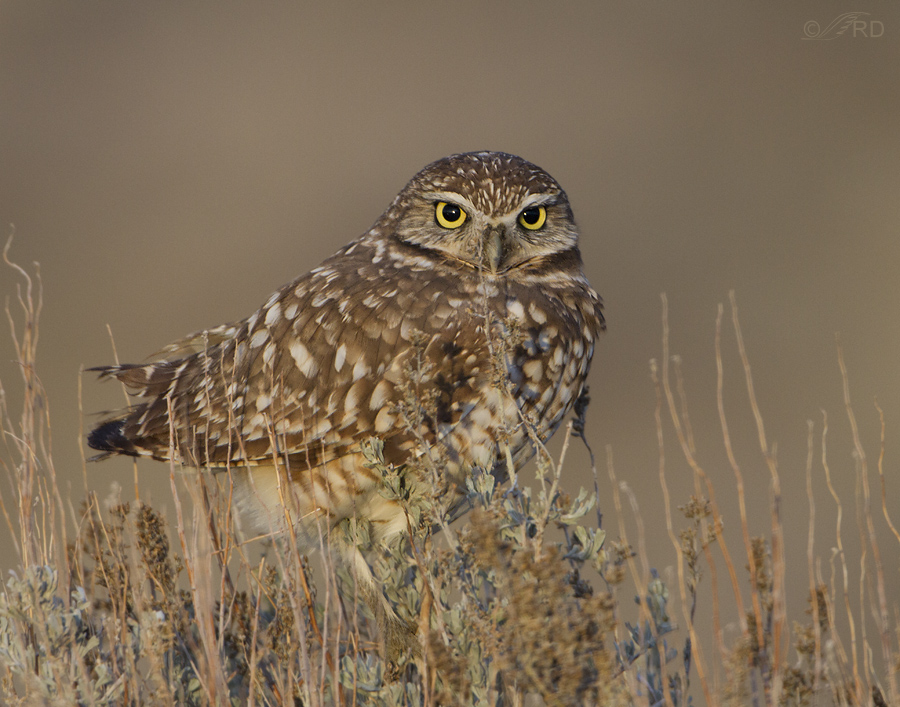I’d like to make a point with this post. It’s one that every experienced bird photographer knows on some level but in the heat of the moment (it can be very exciting getting close to a “good” bird in nice light) it’s one that is easily forgotten. I’m getting much better at remembering but I still slip up occasionally.
The point? Very minor changes in your shooting position can make huge differences (positive, negative or indifferent) in your photo. I’ll illustrate that point with a couple of shots that I took this morning. They’re not my best Burrowing Owl images but they’ll serve their purpose here.

1/160, f/7.1, ISO 640, 500 f/4, 1.4 tc, natural light, not baited, set up or called in
This morning we think we found a new (to us) Burrowing Owl burrow right next to the road on Antelope Island that we’ve probably driven by several hundred times and never noticed. We don’t know for sure that it’s an owl burrow because we didn’t get out of the pickup and go tromping all over the area to inspect it. And right next to it was this juvenile owl, perched on a sagebrush, where we’d never seen an owl before. It had been cloudy but some light had begun peeking through a “crack” in the clouds when this shot was taken.
It’s a “busy” perch and when the sun began to come out the bird was sidelit so I decided to change my position slightly…

1/320, f/7.1, ISO 640, 500 f/4, 1.4 tc, natural light, not baited, set up or called in
so I backed up (I shoot from my pickup) perhaps 20 feet.
That small change of position transformed the shot completely. The bird is now lit from the front instead of the side, there’s dried vegetation in the background instead of water, I have a side view of the owl instead of a frontal view and the perch looks like a completely different sagebrush than it did in the first image. In fact, it seems like the owl must have moved after the first shot but I’m almost positive that it didn’t so much as wiggle a toe. The images were taken two minutes apart.
But dagnab it, I sure wish that one sagebrush sprig wasn’t in front of the face and shoulder! And to be perfectly honest, I didn’t even notice it in the field – only when I got home and started reviewing images. Soooo many things to be cognizant of when you’re “out there” shooting…
I think it’s kind of interesting to compare the two images. For example, that blasted sagebrush sprig in front of the face in the second shot can be seen to the left of the bird in the first image.
Ron


Beautiful images. I travel a few hours to Cape Coral, Fl where there is a very large population of burrowing owls. I just love them! Beautiful work!
Thank you, Lana. I’ve heard about those Cape Coral owls.
Both are such gorgeous captures of a fascinating creature… Thanks so much again, for sharing. I adore burrowing owls!
They’re an endearing species, aren’t they Christina?
Great shots again, Ron. I love those little guys. I like the unique view on the side view, the top image. I can see that the little twig is a bit of a distraction on the second. Just things that us photogs have to put up with.
Thanks, Bob. We have to put up with a lot of “stuff”, don’t we?
Ron your blog is incredibly educational, amazing photography…I am so grateful that you share and that a bird club member shared it to me….Thank you
Welcome to my blog, Molly. And thank you so much for what you said about it being “educational” – that means a lot to me.
Beautiful macros with great details!
Thank you, Charlotte.